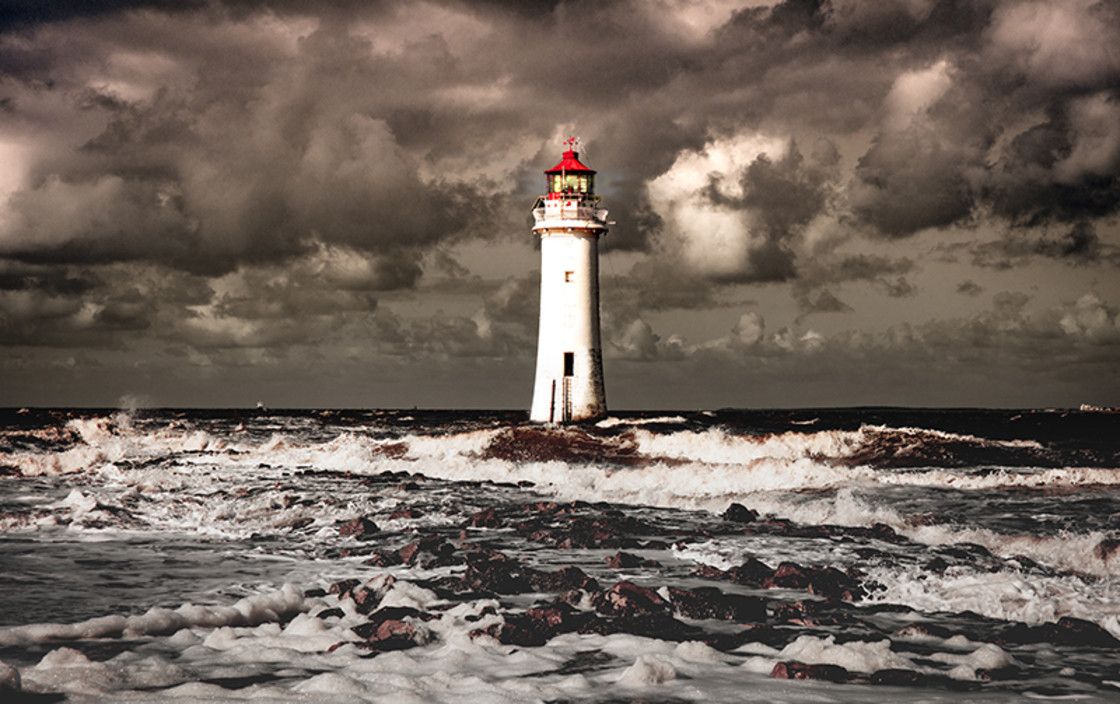
Stormy Skies
The name comes from a Perch; a timber tripod supporting a lantern first erected in 1683 as a crude beacon to allow shipping to pass the rock safely. As the Port of Liverpool developed in the Nineteenth Century the perch was deemed inadequate as it required constant maintenance and only produced a limited light. Construction of the present tower began in 1827 by Tomkinson & Company using blocks of interlocking Anglesey granite using dovetail joints and marble dowels. It was designed to use many of the same construction techniques used in the building of John Smeaton's Eddystone Lighthouse 70 years earlier.[4] Modelled on the trunk of an oak tree, it is a free standing white painted tower with a red iron lantern. It is 29 m (95 ft) tall. It was first lit in 1830 and displayed two white flashes followed by a red flash every minute; the light-source was thirty Argand lamps, mounted on a three-sided revolving array (ten lamps on each side, with red glass mounted in front of one side).[5] There were also three bells mounted under the gallery to serve as a fog signal; they were tolled by the same clockwork mechanism that caused the lamps to revolve
Image dimensions: 800 x 503 pixels
Stormy Skies
More InfoStormy Skies
The name comes from a Perch; a timber tripod supporting a lantern first erected in 1683 as a crude beacon to allow shipping to pass the rock safely. As the Port of Liverpool developed in the Nineteenth Century the perch was deemed inadequate as it required constant maintenance and only produced a limited light. Construction of the present tower began in 1827 by Tomkinson & Company using blocks of interlocking Anglesey granite using dovetail joints and marble dowels. It was designed to use many of the same construction techniques used in the building of John Smeaton's Eddystone Lighthouse 70 years earlier.[4] Modelled on the trunk of an oak tree, it is a free standing white painted tower with a red iron lantern. It is 29 m (95 ft) tall. It was first lit in 1830 and displayed two white flashes followed by a red flash every minute; the light-source was thirty Argand lamps, mounted on a three-sided revolving array (ten lamps on each side, with red glass mounted in front of one side).[5] There were also three bells mounted under the gallery to serve as a fog signal; they were tolled by the same clockwork mechanism that caused the lamps to revolve
Image dimensions: 800 x 503 pixels